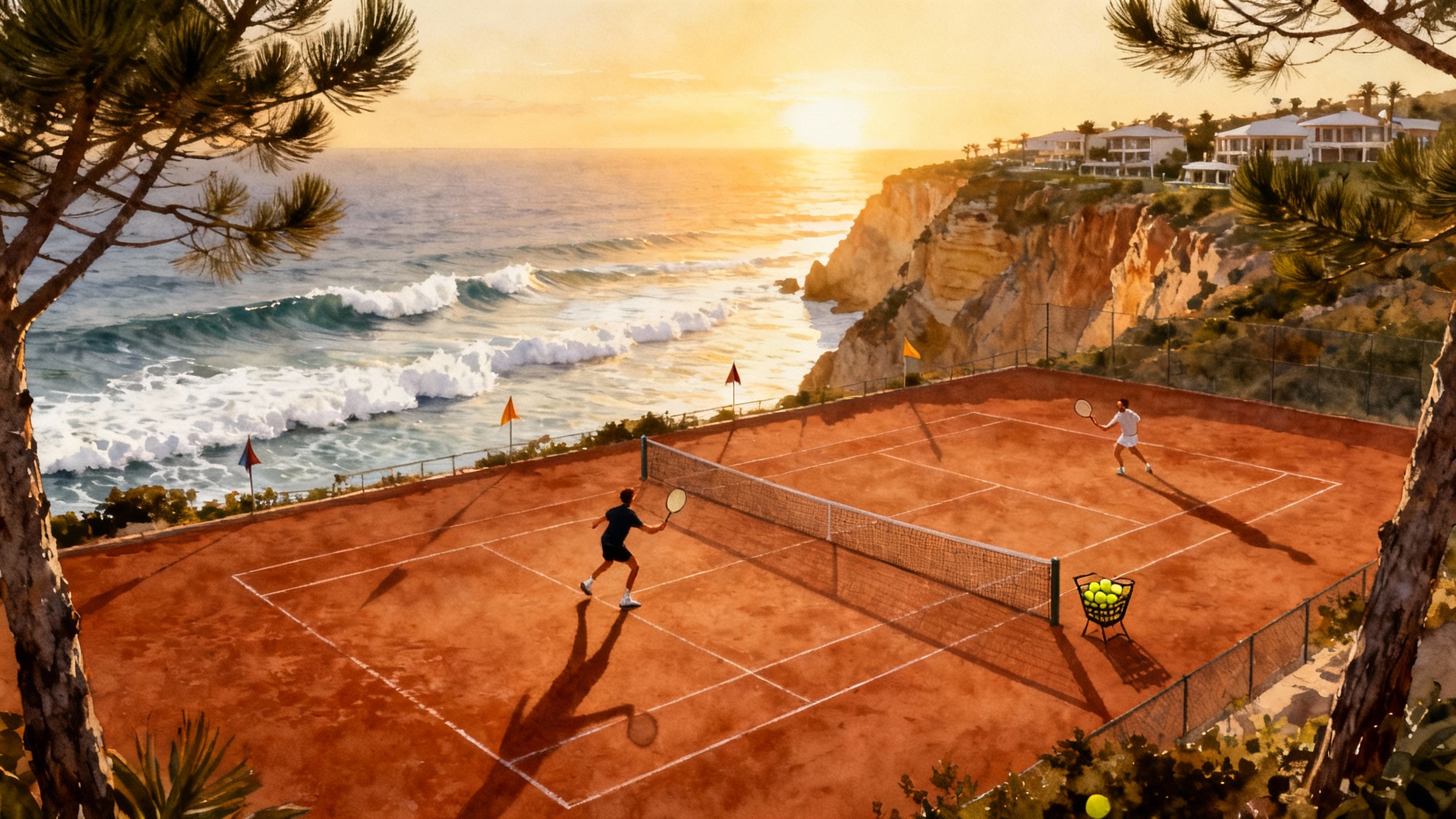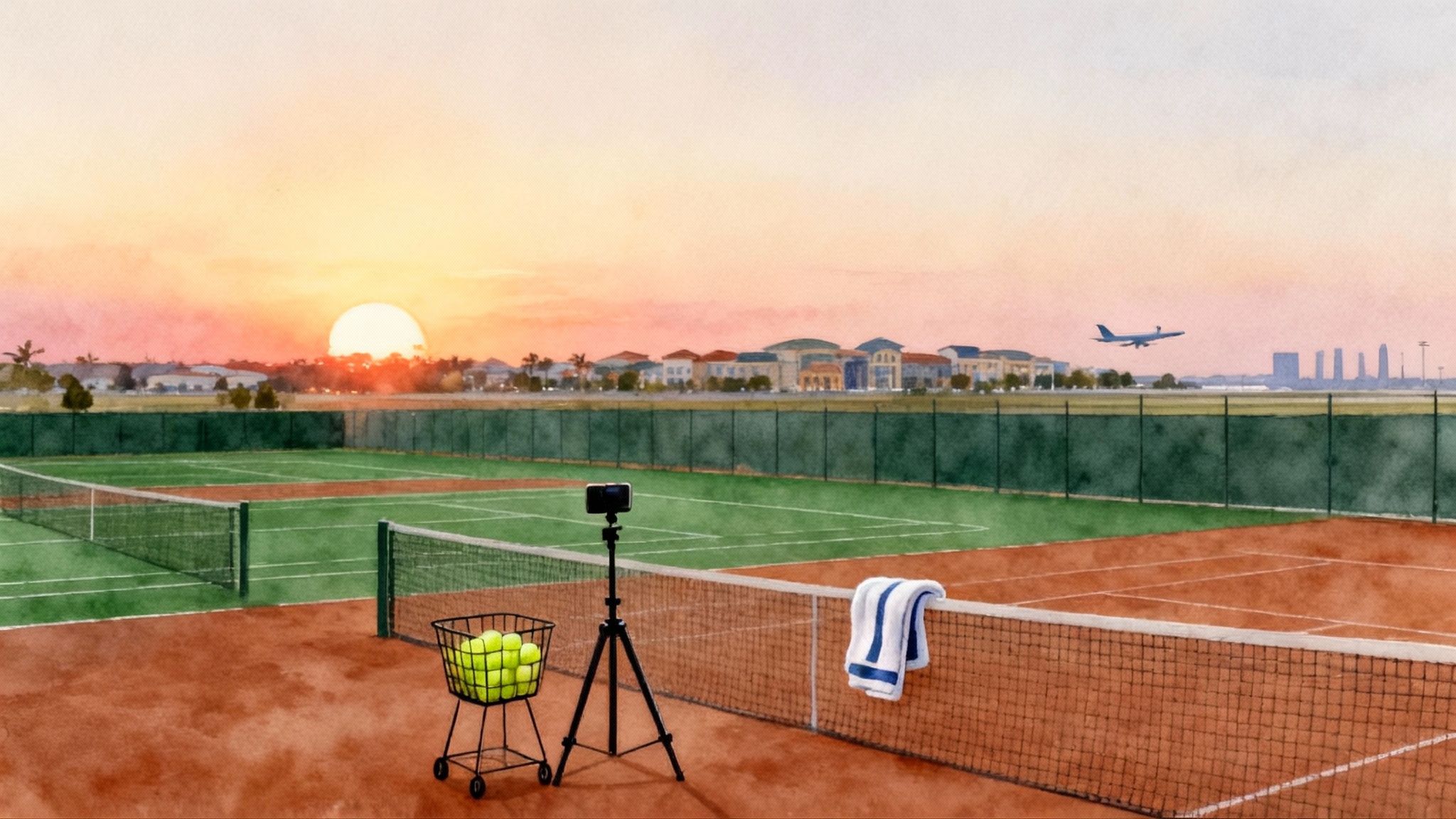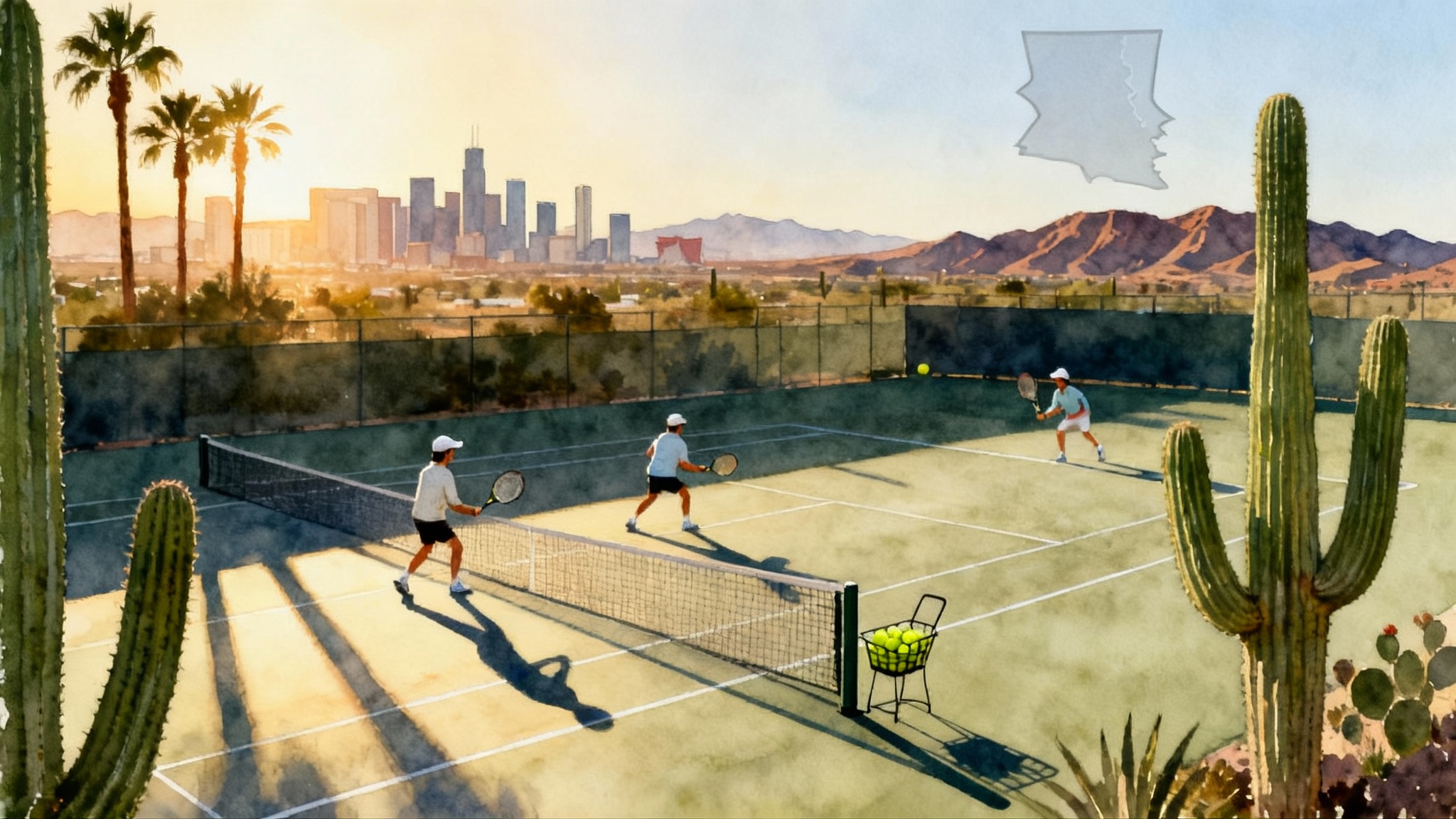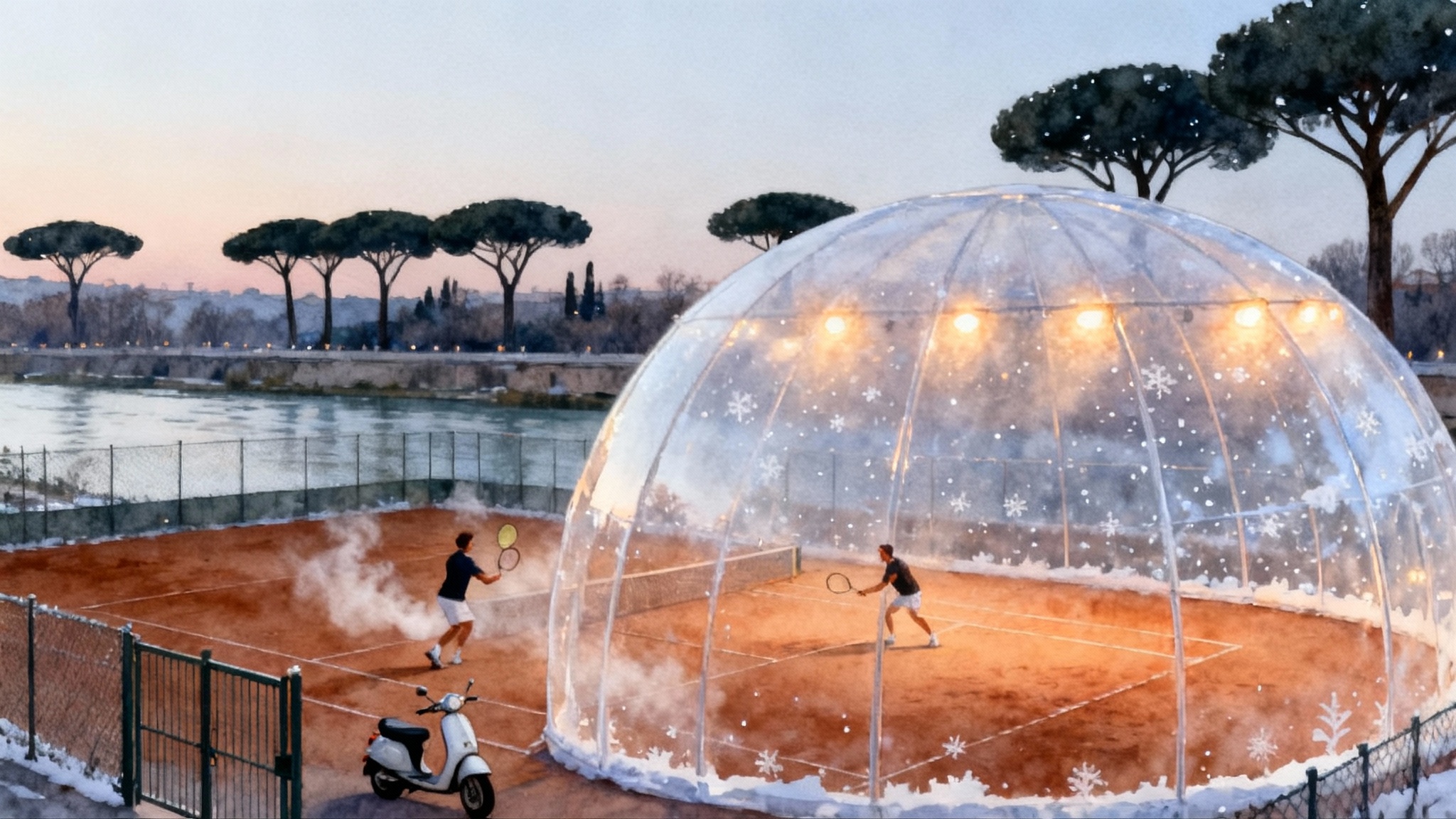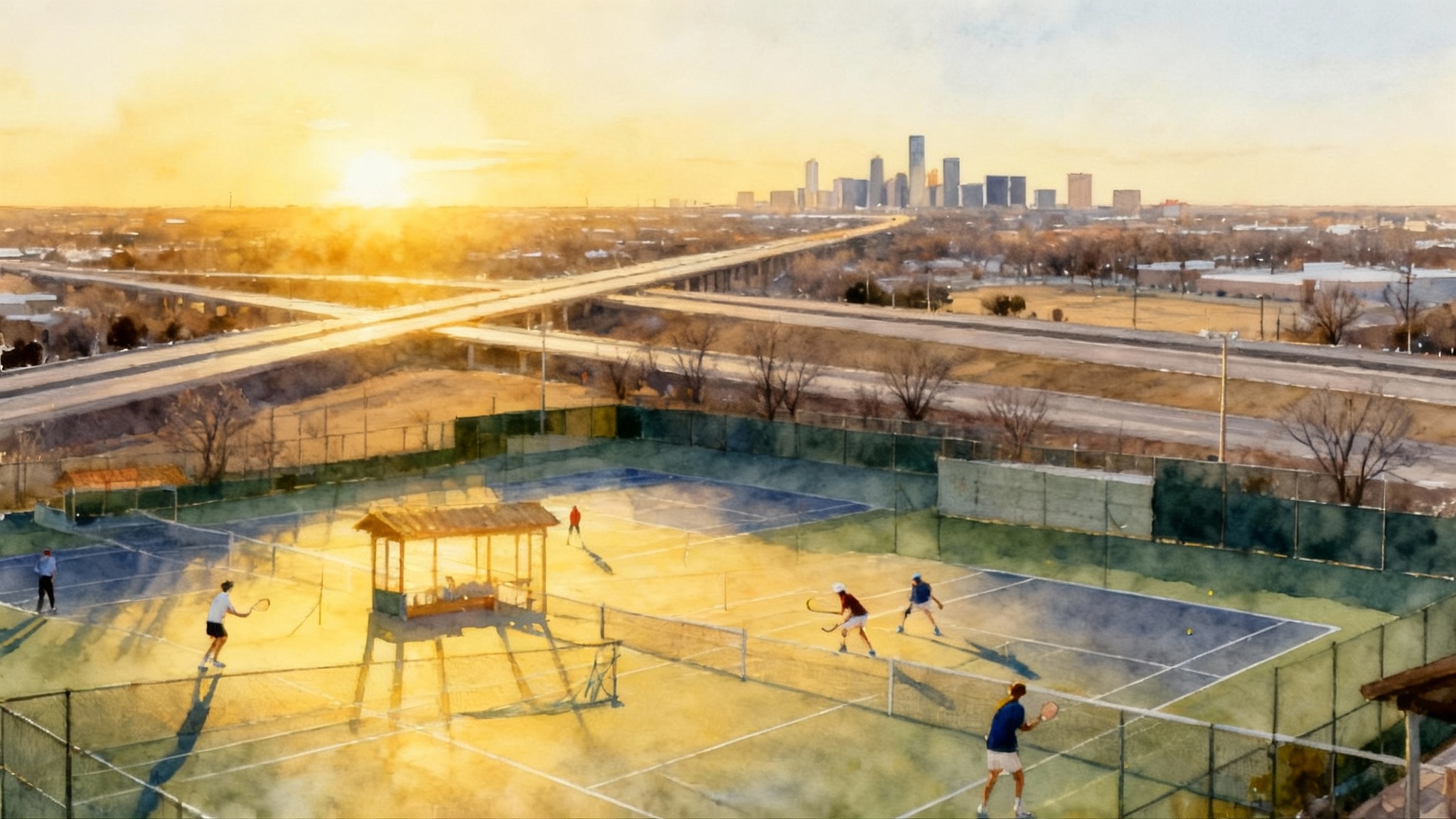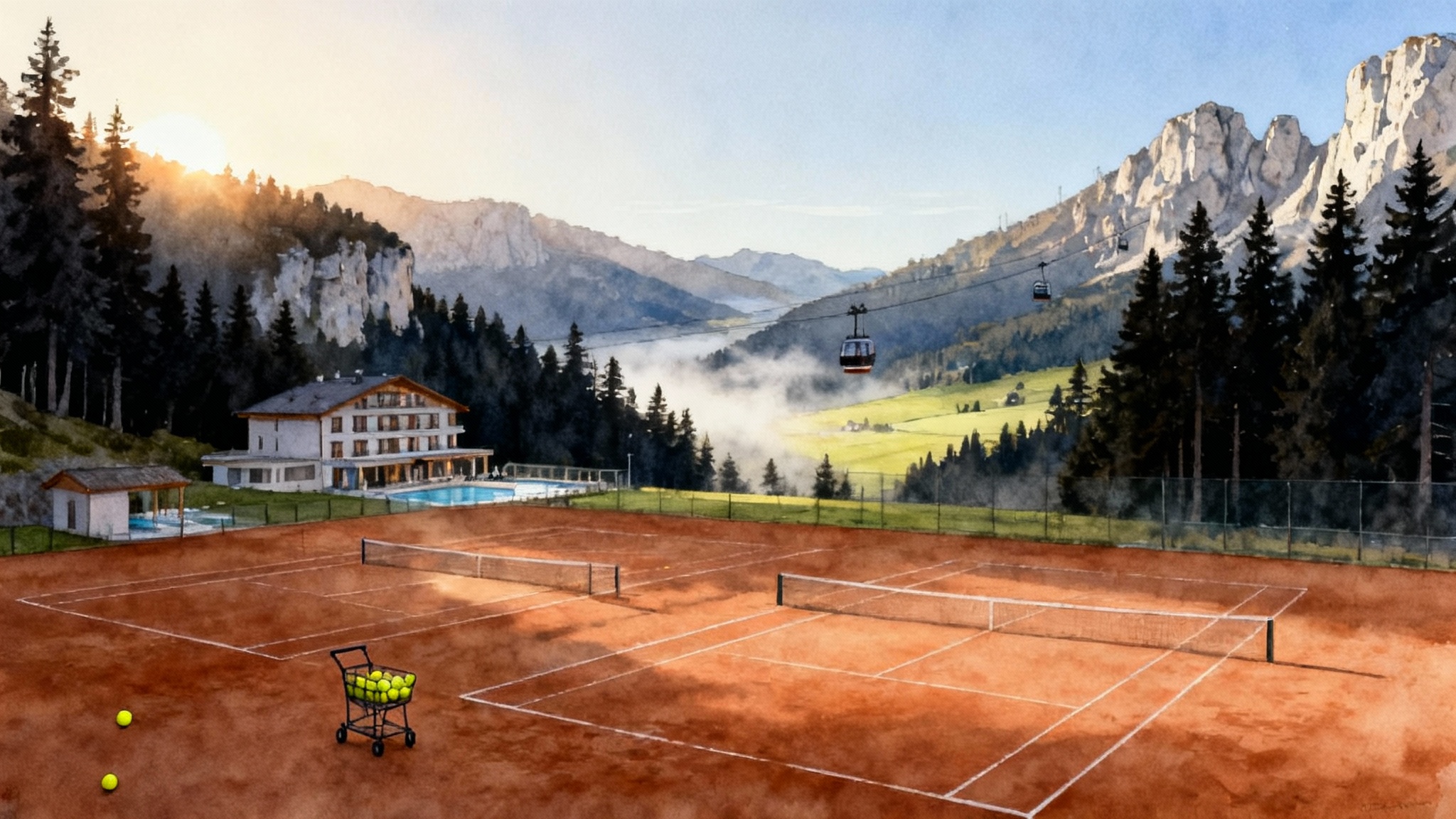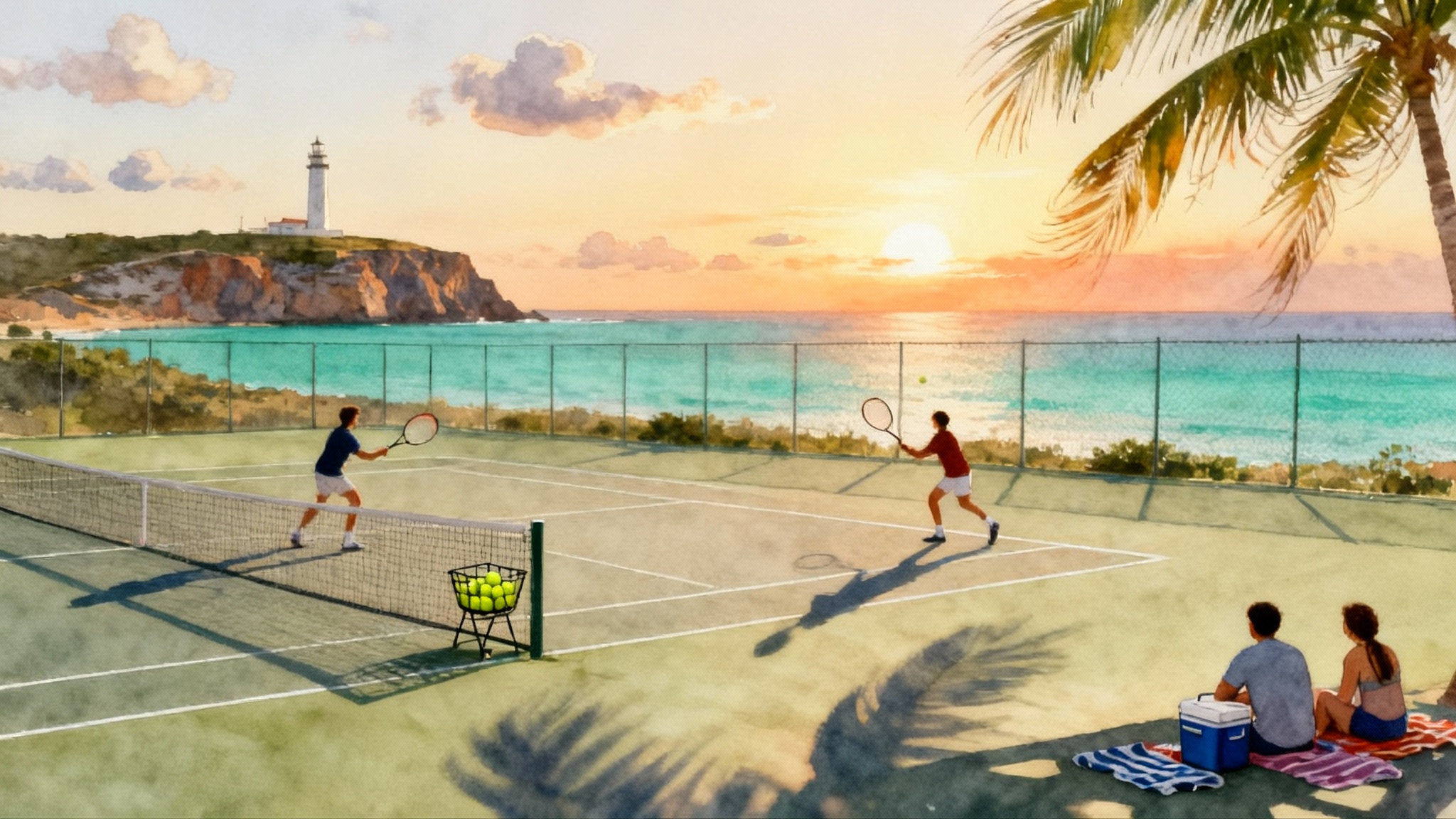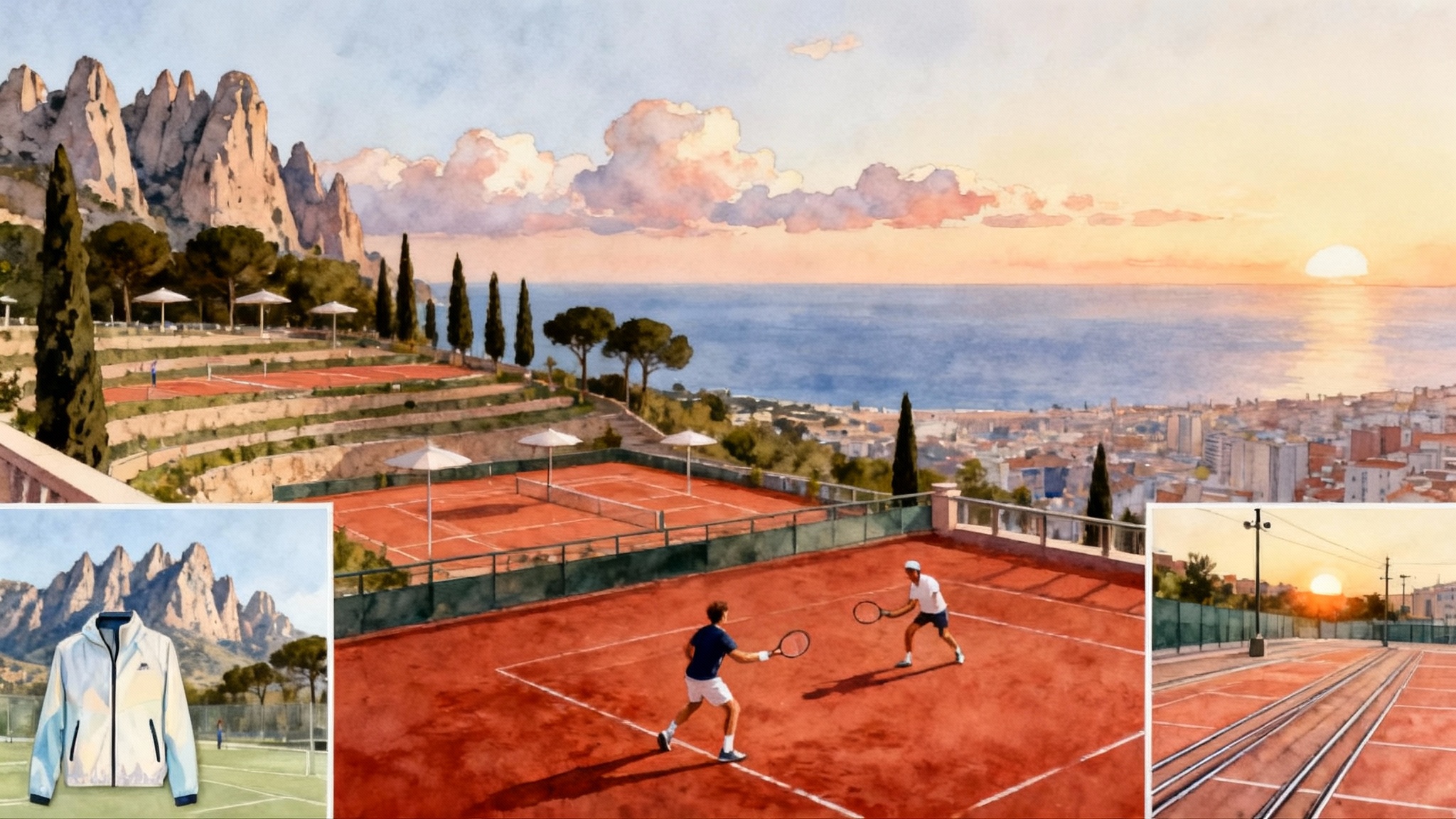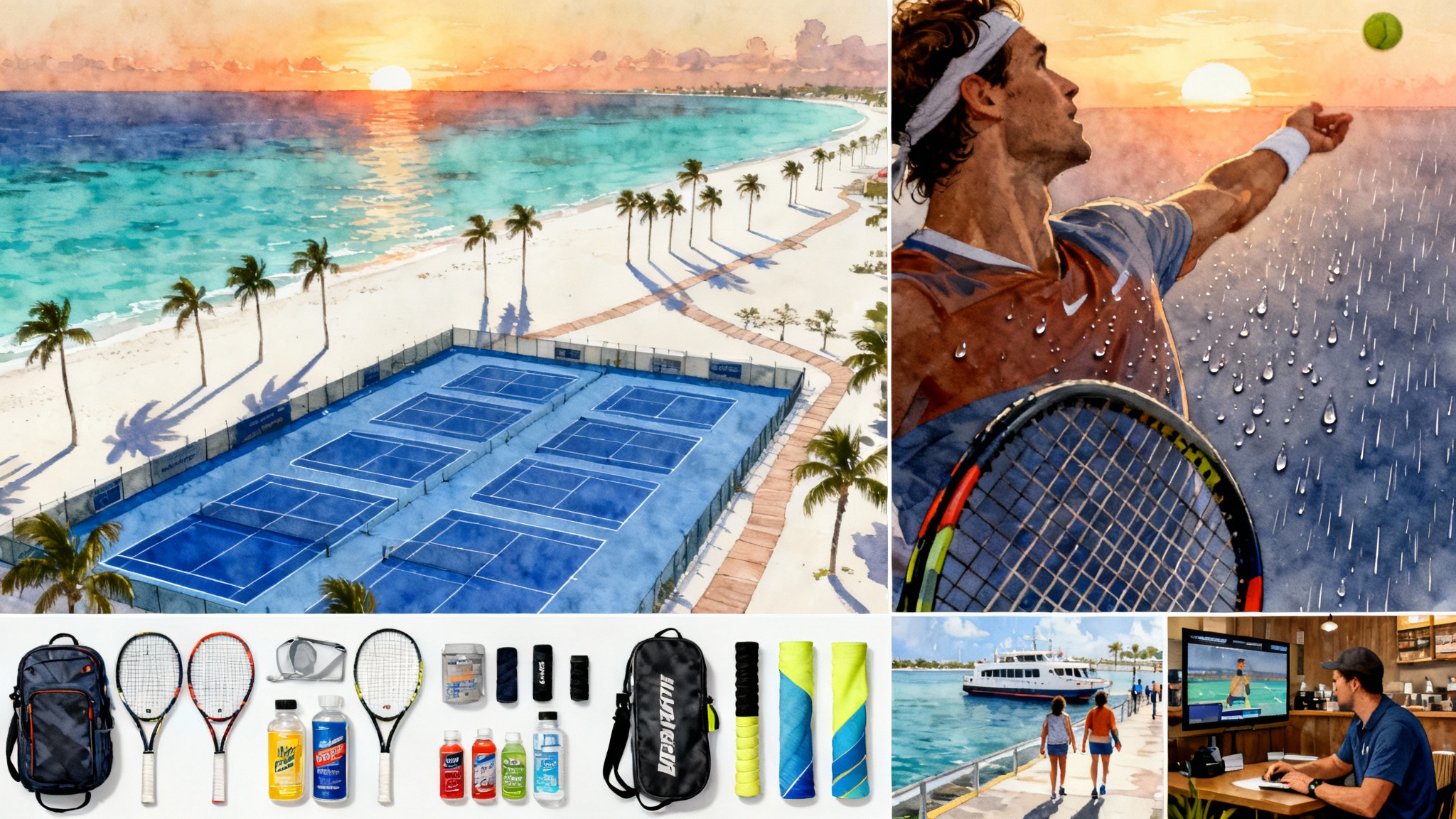Tenerife vs Gran Canaria: Winter Tennis Guide 2025–26
Planning a December to February tennis block in the Canary Islands? Compare Tenerife and Gran Canaria by microclimate, wind and sun exposure, court surfaces, costs, and sample 7–14 day training plans, plus a smart spring tune-up in Spain.
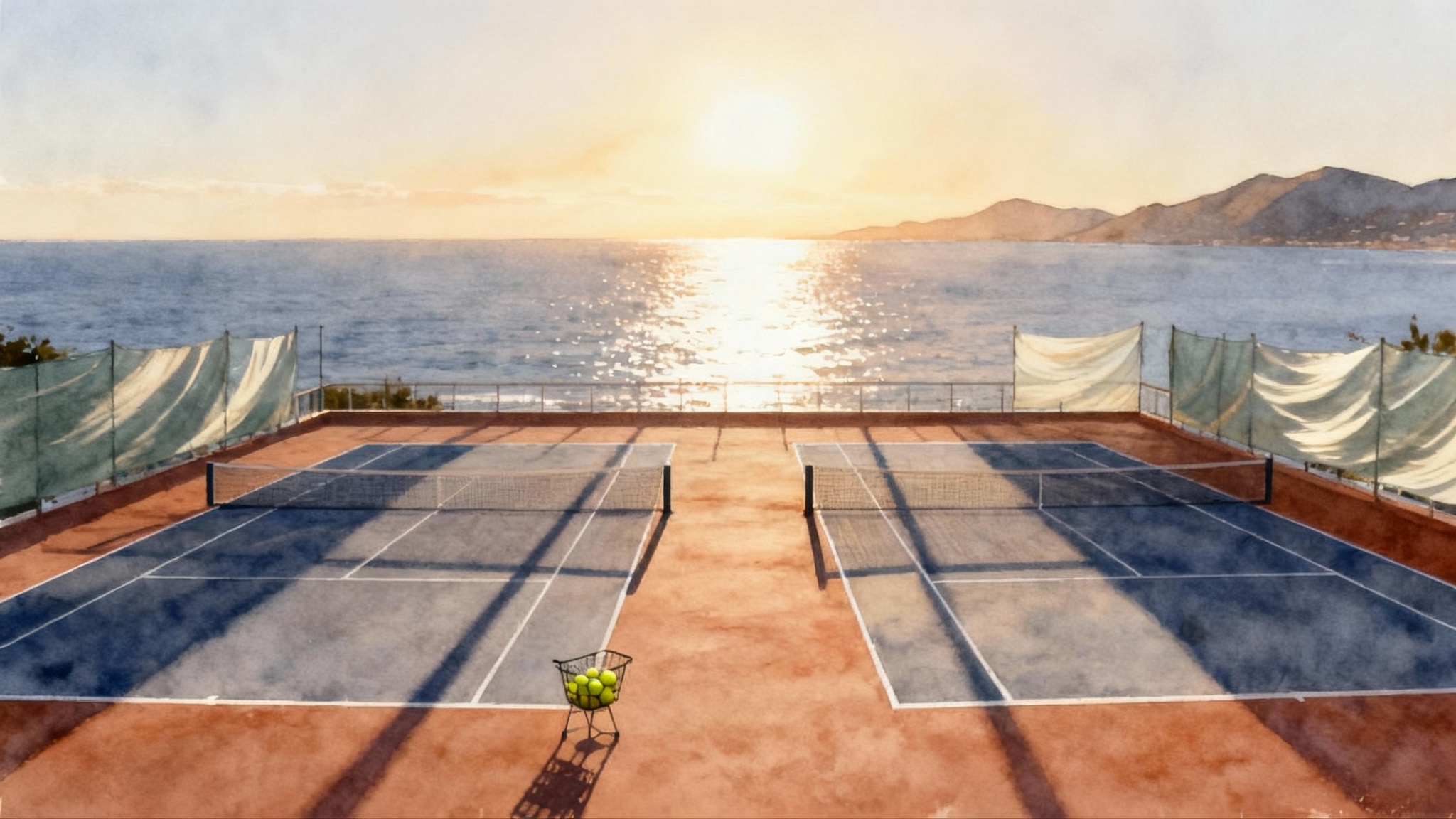
Why the Canaries are Europe’s winter tennis base
If your season starts in spring, the months that decide your level are often the quiet ones between December and February. The Canary Islands sit on the latitude of North Africa, which gifts a stable, dry winter compared with mainland Europe. Daytime highs typically sit in the high teens to low twenties Celsius, evenings stay mild, and rainfall is low. That combination means you can stack outdoor hours without spending half your trip chasing dry courts.
The catch is that the islands are volcanic and mountainous. Air flows, calima dust events, and orographic clouds create sharp microclimates. A court five kilometers away can play like a different country. The key to a great block is to choose the right zone before you book. This guide focuses on Tenerife and Gran Canaria because they combine reliable winter sun with the widest range of courts, coaching options, and flight connections.
How winter actually feels from December to February
- Temperature: most south coast zones average comfortable short‑sleeve conditions midday, with light layers needed at night. Higher altitudes feel springlike at noon and cool after sunset.
- Rain: showers are brief and usually isolated. North‑facing slopes see more cloud and drizzle than the south.
- Wind: consistent trade winds freshen the east and northeast coasts. South and southwest pockets are calmer. Afternoon winds rise more than morning winds.
- Sun angle: the winter sun is low, which can produce glare. Court orientation matters.
These patterns repeat year after year, which is why the Canaries are popular with cyclists, swimmers, and tennis players who want dependable outdoor blocks.
Tenerife vs Gran Canaria at a glance
- Tenerife advantages: the southwest coast has the highest winter sun consistency on the island, a large inventory of resort courts, and easy add‑ons like altitude day trips for conditioning. The south has sheltered pockets that suit long baseline drilling.
- Tenerife cautions: El Médano and the southeast are windy. North of the island can be cloudier in winter due to the trade wind inversion.
- Gran Canaria advantages: the south coast from Maspalomas to Meloneras is sunny and leeward, with a compact footprint that makes logistics easy. Traditional clubs near the capital broaden surface options.
- Gran Canaria cautions: the east side near the windsurfing spots is breezy. The north around Las Palmas is cooler and cloudier in winter.
Microclimates by zone
Think of each island as a small mountain shaped like a wedge catching wind and sun. Where you place yourself on that wedge changes your training day.
Tenerife zones
- Costa Adeje and La Caleta: leeward and sunny for much of winter. Courts here often have windbreaks and sit behind buildings or terrain that tame gusts. Afternoon breezes are present but usually manageable.
- Playa de las Américas and Los Cristianos: similar sun exposure with a bit more bustle. If you want a short walk to food and a social scene, this is an easy base.
- Guía de Isora and Playa San Juan: southwest orientation with big‑sky sun and less traffic. Great for athletes who want a quieter recovery environment.
- El Médano and the southeast: famous for wind and watersports. Expect crosswinds and sand on the baseline on bad days. Consider it only if pricing or a specific coach pulls you there.
- Puerto de la Cruz and the north: greener and cooler, more cloud in winter. Beautiful for recovery walks and a change of scenery, but plan flexible court times and have a backup day plan.
- Mid‑altitude towns above the south coast: cooler air and stronger ultraviolet at midday. Useful for aerobic hikes on off days, but not ideal for daily tennis unless you like crisp conditions.
Gran Canaria zones
- Maspalomas, Meloneras, and Costa San Agustín: south coast sunshine with dunes and hotel courts. Many properties have sheltered corners that play true even on breezy afternoons.
- Puerto Rico and Mogán: tucked coves and a marina feel. A good choice if you want calm mornings and scenic recovery walks.
- East coast near Pozo Izquierdo: among the windier parts of the island. Book here only if you find a particularly good training setup with reliable windbreaks.
- Las Palmas and the north: more urban energy and cultural options. Expect cooler, cloudier winter stretches; plan midday sessions to catch the best light.
- Central highlands: spectacular roads and climbs for conditioning, colder air for tennis. Use for cross‑training, not as a primary base.
Wind and sun exposure on court
- Court orientation: north–south courts reduce low‑sun glare in winter. East–west courts can be tough for afternoon serve practice.
- Windbreaks: tall netting, perimeter hedges, and buildings downwind can cut perceived wind by a surprising margin. Touring the facility on arrival and choosing courts four and five instead of one and two can change your session quality.
- Time of day: aim for 08:30 to 11:30 for your most technical work. Book a second slot around 15:00 for point play when a bit of wind helps reveal weak contact.
- Surface color: dark green or blue hard courts can glare less than bright acrylic in peak sun. Clay plays slower and tames wind but needs maintenance.
Surfaces and access
- Hard courts: most resort complexes in the south of both islands use acrylic hard courts with medium pace. You can usually rent by the hour and add a coach if needed.
- Clay courts: more common in traditional clubs near the capitals or in a handful of dedicated academies. Clay is ideal for building point construction, but slots may be limited and often require membership or prearranged packages.
- Indoors: scarce. Assume outdoor‑only planning. That makes microclimate choice even more important.
If your spring goal includes clay events, treat hard courts as your volume base and make sure to layer in a clay tune‑up block on the mainland during March to May. For a Spain mainland option, see our Valencia clay and city bases, and keep an eye on the Barcelona coast clay guide for year‑round scheduling.
Cost comparison for a 7 to 14 day block
Prices vary by holiday windows and how early you book, but these ranges reflect typical winter costs for two players traveling together.
- Flights from major European hubs: moderate winter fares with spikes near Christmas and New Year. Booking six to eight weeks out usually beats last‑minute buys.
- Accommodation: south coast resorts command a premium in late December and the first week of January. February stabilizes and often softens by the third week. Self‑catering apartments are the best value for athletes who want precise nutrition control.
- Court fees: hard court rentals often sit in the mid‑range per hour; clay is similar or slightly higher and can include lighting fees for late sessions. Packages that bundle courts and baskets can shave 10 to 20 percent off.
- Coaching: expect a higher rate for seasoned tournament coaches and tactical specialists. Small‑group rates offer the best value if your level matches.
- Car rental: useful even on a compact island because a 15 minute drive can change the wind on court. South bases often manage with ride hailing if your courts are walkable.
- Food and recovery: fresh produce and fish are affordable. Budget for electrolytes, recovery shakes, and a massage every five to seven days.
As a ballpark, a focused seven day block for two people that includes a mid‑range apartment, ten to twelve court hours, two coaching sessions, a car, and simple home‑cooked meals often lands in the mid four figures. Doubling the days does not double the cost because coaching and court packages scale better than nightly rates.
Sample 7 day training block
This template assumes a south coast base with morning calm and a mild afternoon breeze.
- Day 1, settle and assess: light hit, 60 minutes. Drills are contact focused, no max effort. Afternoon grocery run and mobility.
- Day 2, volume builder: 90 minute morning technical block. Forehand patterns, neutral ball height, serve rhythm. Afternoon 60 minutes of point‑play ladders to seven. Evening 30 minutes band work.
- Day 3, movement and defense: 90 minutes on cross‑court defense and recovery footwork. Afternoon 30 minutes second serve plus first ball. Easy ocean walk.
- Day 4, controlled load: 120 minute mix of serve plus one, approach and volley, and three‑ball patterns. Finish with 20 minutes fast‑feet cones. Massage or contrast shower.
- Day 5, matchplay and film: two sets with a training partner. Capture on video and tag three momentum points per set. Evening review and notes.
- Day 6, skill plus conditioning: 75 minute clay or slower hard court if available. Focus on depth control in wind. Add a 40 minute aerobic run or hilly hike.
- Day 7, taper and test: 60 minute timing check, then a set with constraints. Afternoon pack and recovery.
Sample 14 day training block
Week 1 targets volume and mechanics. Week 2 adds pressure and match scenarios.
- Day 1: arrival looseners, 60 minutes.
- Day 2: 2 hours technique. Serve routine, forehand height windows, backhand depth lines.
- Day 3: 90 minutes footwork ladders and crosscourt stability, 45 minutes mobility.
- Day 4: 2 hours patterning plus short ball attack.
- Day 5: matchplay two sets, video and stat sheet with first serve percentage and rally length.
- Day 6: aerobic hike at mid altitude, 75 to 90 minutes Zone 2. Evening stretch.
- Day 7: active rest and 45 minutes feel rally.
- Day 8: 2 hours clay if available. Heavy legs, heavy topspin, depth targets.
- Day 9: serve day. 60 minutes serves plus returns, 45 minutes first‑strike games to five.
- Day 10: pressure intervals. Three by fifteen minute blocks at match intensity with five minute recoveries.
- Day 11: tactical sparring. Play to patterns, not score.
- Day 12: full match simulation with a tiebreak finish.
- Day 13: light hit and mobility.
- Day 14: benchmark set, pack, and review.
Tenerife or Gran Canaria for your style
- Baseline grinders who like rhythm and repetition: choose Tenerife’s southwest or Gran Canaria’s south coast where you can find sheltered corners and repeatable bounces.
- All court players who want patterns and transition: either island works if you book courts with windbreaks and schedule midday.
- Serve based players: prioritize morning sessions and north–south courts to reduce glare.
- Clay focused juniors: look for clubs that offer clay sessions two or three times per week and supplement with hard court volume.
Pair your Canary build with a spring tune‑up in Spain
A strong winter block pays off only if you bridge it into match‑sharp movement on clay between March and May. Use this framework. If you want a dedicated clay week, Tennis Academy Mallorca offers flexible adult and junior programs. For broader city‑plus‑clay options, plan a week using our Valencia clay and city bases and extend with the Barcelona coast clay guide.
- March, mainland Spain reintroduction: pick a week in Mallorca, Valencia, or Barcelona where clay is plentiful and mornings are cool. Transition drills from skidding hard court timing to higher bounce reception. Add return depth goals on heavy balls.
- April, competition rhythm: target regional events or national‑level open draws that mirror your goals. Build back‑to‑back match days and reduce off‑court load.
- May, sharpen and select: focus on serve variety and second ball intent. Enter the events that matter most and protect freshness by trimming volume midweek.
Juniors can align this with school holidays and the early outdoor swing. Adults can target age‑group events or open money tournaments. For both groups, book courts on clay twice per week through March, then three times per week in April as match load rises.
Booking tactics that save a block
- Choose zone before hotel: pick your microclimate first, then search for accommodation within a 15 minute radius of two different court providers. Redundancy beats a perfect single facility that is fully booked on a windy afternoon.
- Reserve two daily slots: a technical morning hour and a flexible afternoon hour. Cancel the second if wind or fatigue argues against it.
- Ask for court orientation and windbreaks: email or call to confirm north–south courts and wind screens. The answer tells you how tennis‑aware the venue is.
- Hold a clay option twice per week: even one island session on clay helps your spring transition.
- Bring a reel or enough sets of your string: island shops are good, but exact gauges and softer multis or poly hybrids can sell out in winter.
- Share baskets and split coaching: pair with another player of similar level to cut costs and raise intensity.
Wind‑ready gear checklist
- Racquets: two matched frames with swingweight at least five points heavier than your summer setup. Add two to four grams of lead at three and nine on the hoop if contact floats in gusts.
- Strings: one setup at normal tension and one five to ten percent lower for wind. When in doubt, thicker gauge adds stability.
- Grips: a stack of tacky overgrips. Swap at the first sign of slip.
- Balls: bring a fresh can for each key session. In wind, new felt grabs the strings and helps control.
- Eyewear: polarized lenses for low winter sun.
- Hat or visor with a strap: keeps your head still during serve in gusts.
- Sunscreen and lip balm: winter ultraviolet is still strong in the islands.
- Layers: a light quarter zip for warm‑ups and calm morning starts.
- Tripod or fence mount: film five to ten minutes per session to confirm ball height and spacing in wind.
- Recovery kit: mini massage gun or lacrosse ball, elastic bands, and electrolyte tabs.
Mistakes to avoid
- Chasing a cheap room in a windy zone: the session quality loss costs more than you save.
- Scheduling only afternoons: the wind usually rises during the day. Front‑load your technical work.
- Skipping movement checks: wind reveals footwork gaps. Build crosscourt stability and recovery steps into every session.
- Ignoring sun angle: low afternoon sun can flatten your serve toss. Adjust by lowering toss height a touch and moving your stance line to reduce glare.
- Leaving string choices to chance: tension and gauge are your wind control knobs. Plan them like you plan your drills.
Putting it together for 2025–26
- December 2025, build capacity: pick a south coast base in Tenerife or Gran Canaria. Focus on volume, timing, and defensive stability. Keep two strength sessions per week.
- January 2026, layer intent: add approach patterns, serve plus first ball pressure, and structured matchplay.
- February 2026, consolidate: reduce total volume by ten to fifteen percent, emphasize quality sets, and test match routines.
- March to May 2026, mainland clay: schedule a one or two week tune‑up in Mallorca or another clay‑rich region. Add weekly competition where available, then taper into your target events.
The pattern is simple. Use the Canaries to guarantee court time and repetition, then let Spanish clay refine your point construction and fitness at match speed.
Final choice: Tenerife or Gran Canaria
If you want the widest choice of sheltered pockets and resort courts in a compact area, Gran Canaria’s south coast is hard to beat. If you prefer a slightly larger island with dramatic scenery, a deep hotel inventory, and easy access to altitude hikes on rest days, Tenerife’s southwest works beautifully. Both can deliver a professional winter block if you choose the right zone and book with redundancy in mind.
Pick your microclimate, secure two daily court slots, and bring a wind‑aware gear plan. Do that, and your 2025–26 winter will not be about the weather at all. It will be about the progress you stack, one clean contact at a time.
